
When it comes to operating an automobile with a gasoline-powered combustion engine, you have two options: interference or non-interference engines. The key question now is how to detect if your engine is interference or non-interference.
For starters, interference combustion engines are efficient, dependable, and long-lasting, which is why they are used in the majority of modern automobiles. The advantages of the interference engine type have made it a popular choice for many years now. But it has a downside that can only be addressed via frequent inspections and maintenance.
Is it a problem that your car has an interference engine? Maybe not after all! In the next part, we’ll discuss interference vs. non-interference engines in detail.
Differences between Interference and Non-Interference Engines
Interference Engines

The internal workings of an interference engine and a non-interference engine may be distinguished relatively easily if you know what to look for. “What is an interference engine?” maybe your first question. What does it mean?
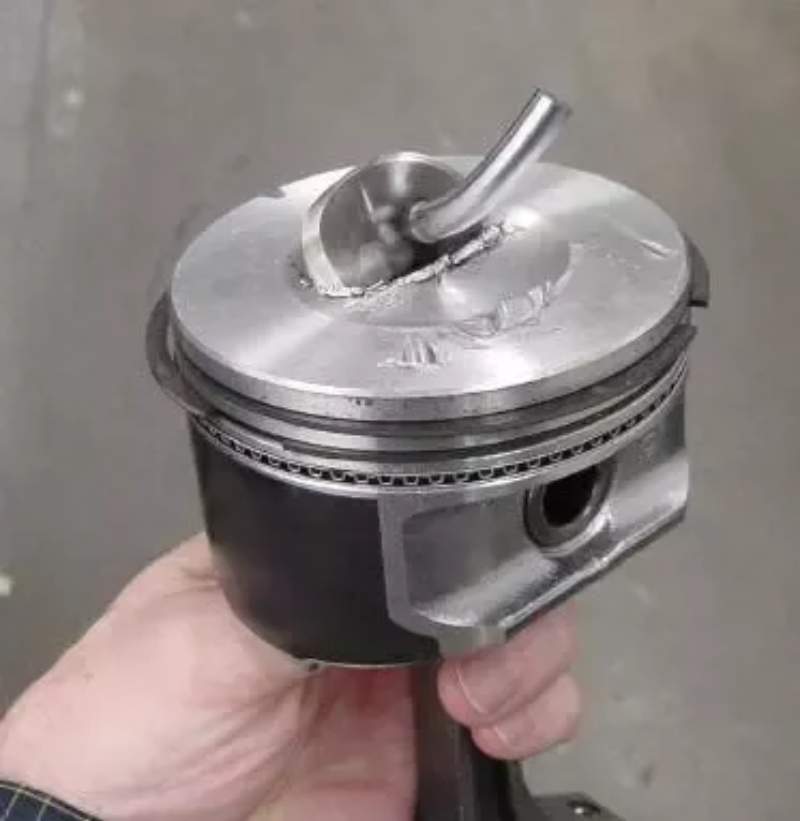
Four-stroke vehicle engines with fully open valves that move towards any place where the piston travels are known as interference engines. The engine is named an interference engine because the piston interferes with the fully open valves and takes up the same amount of space.
The top dead center of an interference engine does not have a gap between the fully open valves and the piston.
Non-Interference Engines

Those who ask, “What is a non-interference engine?” will, of course, receive a detailed explanation. The non-interference engine is the opposite of the interference engine.
Due to the gap that occurs between the valves and the pistons, the piston doesn’t travel into the space of the fully open valves in this situation. Breakage of a timing belt or chain can cause significant damage to an interference engine.
With a non-interference engine, this is not the case. So, should you be concerned if you have an interference engine? No.
Interference engine protection
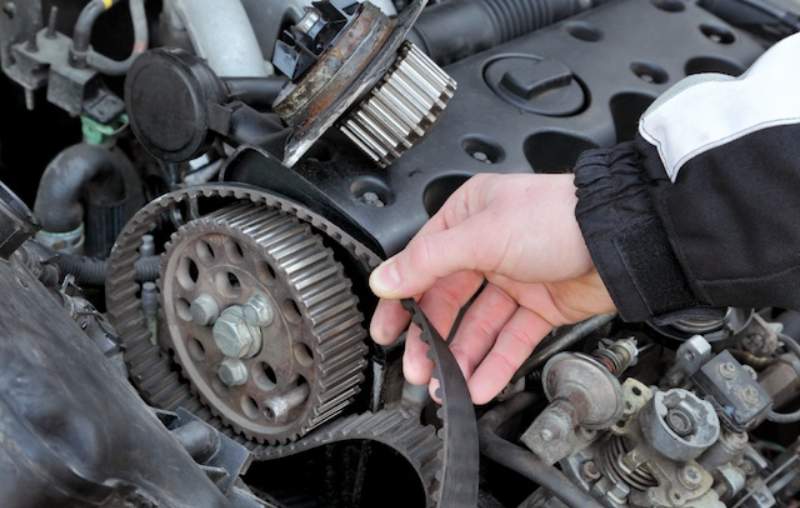
Interference engine damage may be avoided by inspecting the timing belt on a regular basis to look for signs of wear that could lead to a timing belt breaking.
In addition, interference engines have a greater compression ratio and a demonstrated capacity to breathe better than non-interference engines, despite the disadvantages mentioned above. Interference engines are noted for their superior performance and efficiency.
How to tell if You have an Interference Engine
First and foremost, it is important to point out that most current cars have interference engines. Most likely, you’re also behind the wheel of a vehicle powered by an interference engine.
In the meanwhile, let’s find out whether your vehicle has an interference engine or not.
Google and cross-check the engine model of your vehicle
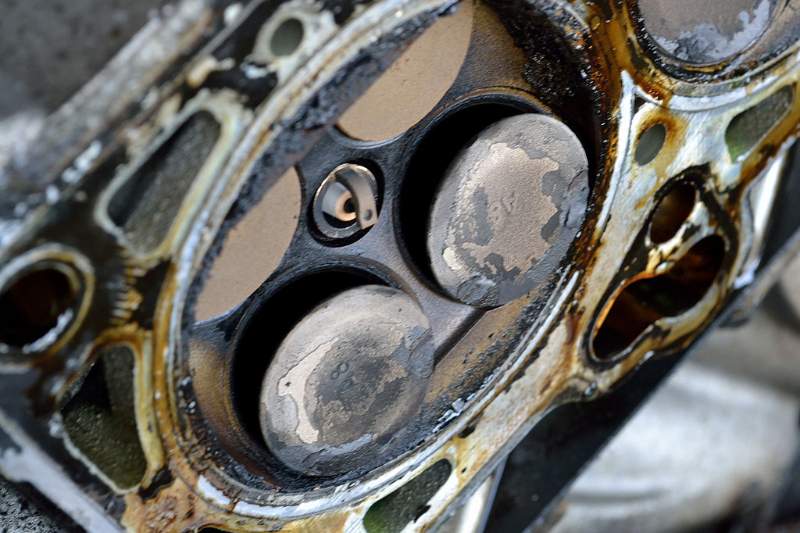
In order to determine whether your car uses an interference engine, the process is not that difficult. You may seek for a list of vehicles with interference engines on Google and compare the engine model number of your vehicle with the one of the specific make and model of vehicle that appears to be similar to your own.
There are several ways to determine whether Mercedes and Nissan models have interference engines, such as searching for “Mercedes interference engine list” or “Nissan non-interference engine list.”
Have a conversation with a knowledgeable car technician
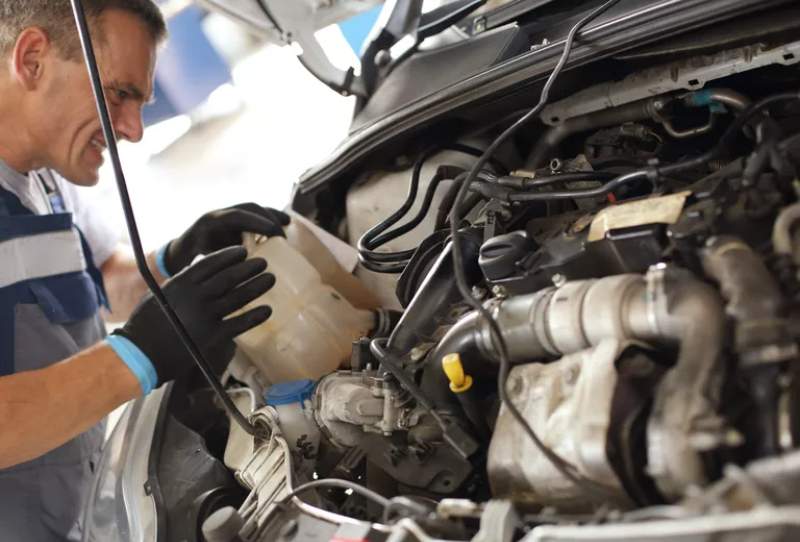
Scheduling an appointment with a local auto repair that is specialized in interference engines is another simple approach to know if your vehicle is powered by an interference engine.
All cars equipped with interference engines and those powered by non-interference engines are familiar to the vast majority of expert auto technicians.
A quick look at the vehicle, particularly in the engine compartment, should allow your mechanic to determine whether or not it has an interference engine.
How to maintain your interference engine?
What to do if, after making the inquiry, you find out your car has an interference-type engine? And how to prevent any future damage to your engine?
One approach is to follow the manufacturer’s maintenance plan and replace the engine’s timing belt. On your car’s service manual, you may find this information.
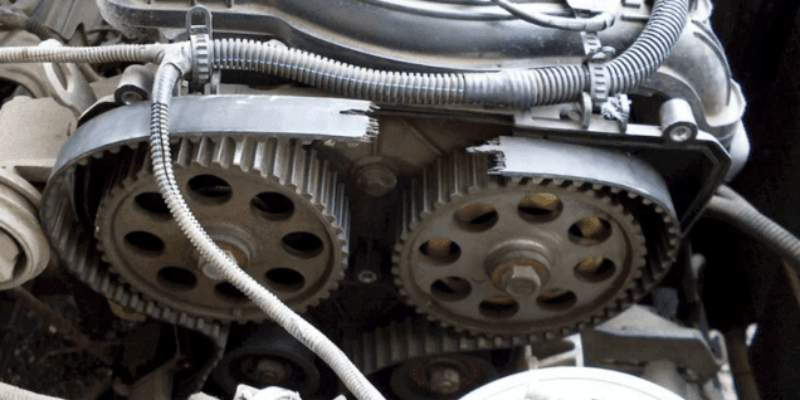
Did you know that engines could have a timing belt or a timing chain? To know more about the differences between the two technologies, read the following article.
Regardless of the type of engine in your car, you should change the timing belt on a regular basis to minimize problems. Timing belts typically last between 60,000 and 100,000 miles.
As a result, if you don’t know how long your engine’s timing belts are expected to last, you may need to undertake frequent visual checks. Look for evidence of damage, such as abrasions and cracks, on the timing belts of your vehicle.
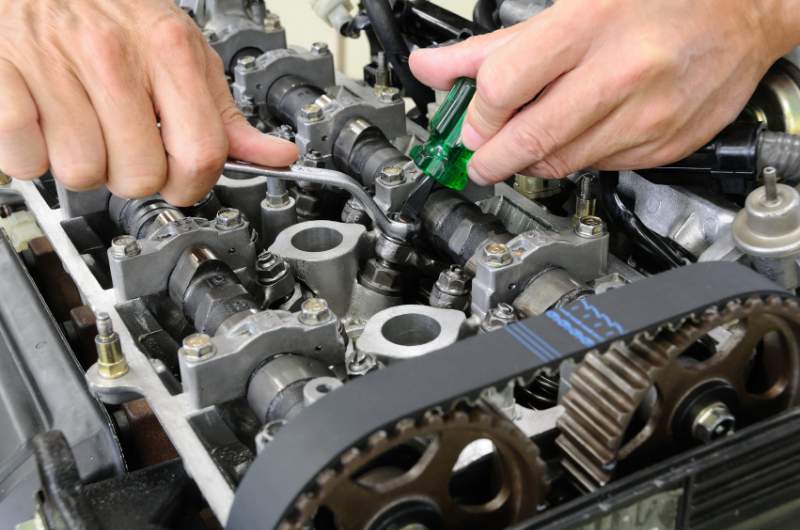
When the timing belt is damaged, the engine will start screaming. So, if you hear these noises, it’s time to update your car’s timing belts.
Are Interference engines better than Non-Interference?
Interference engines aren’t any better than non-interference. As a matter of fact, when something goes wrong with one of these engines, it tends to become worse rapidly, which might lead to a high repair bill from your technician.
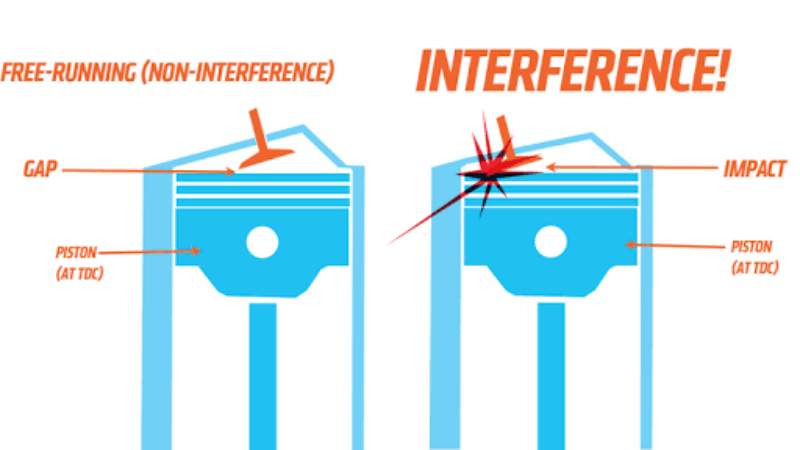
Contrary to what you may think, interference engines have become a frequent feature in many vehicles engines, as they tend to be more powerful than non-interference engines. Suppose you are not experiencing any engine problems. In that case, an interference engine could be a better option than a non-interference engine.
This is due to the fact that interference engines often have a high compression ratio, which many automobile manufacturers like. In other words, everything is OK as long as your interference engine isn’t acting up, but things quickly turn bad when it does.
Why do Automakers still produce Interference Engines?

Despite these flaws, manufacturers continue to create interference engines because they provide them greater control over the engine’s numerous performance characteristics.
This enables automobile makers to tailor the engine’s performance to the vehicle’s specs. There are a number of ways to improve the performance of a car with a particular engine.
Manufacturers may make their vehicles more energy-efficient by increasing the compression ratio. Manufacturers may tailor the engine to meet the vehicle’s specific requirements, resulting in improved performance in all areas.
What if the Timing Belt Breaks in Interference Engine?
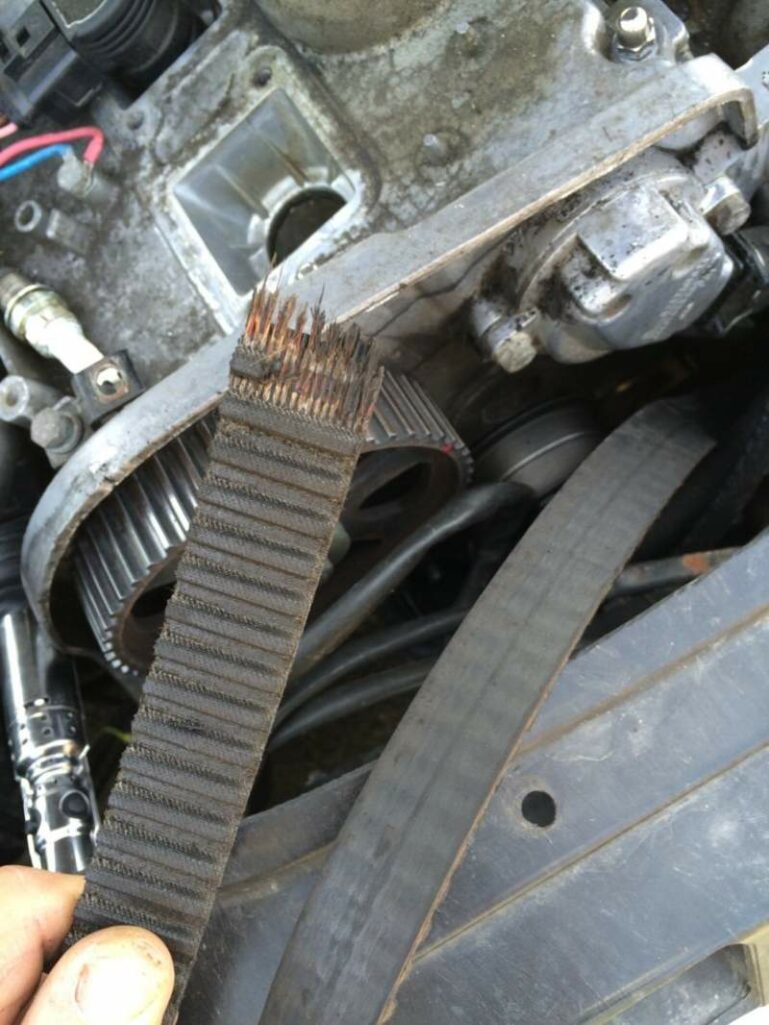
As we’ve already stated, interference engines have a tendency to fail catastrophically if one component fails. The timing belt is the main component that causes problems to this engine.
When your vehicle’s timing belt snaps, the entire engine shuts down. As soon as your vehicle’s timing belt breaks while you’re traveling with an interference engine, the camshaft will stop rotating.
Some of your engine’s valves will remain open as a result of this. While the camshaft has stopped spinning, it will continue to do so because of the force of inertia, which will keep the pistons moving.
As a result of this, the valves and pistons will both be damaged by the resulting piston-to-valve contact. This can do significant harm to your engine and will cost a significant amount of money and time to repair.
Conclusion
The subject of interference and non-interference engines has been extensively discussed throughout this post. So, you should be able to detect if you have an interference engine or not based on the preceding suggestions.
Because interference engines are now found in the vast majority of new cars, it’s quite probable that yours is one as well. If this is the case, you should do all you can to keep an eye on your car’s timing belt to make sure it doesn’t break.
If your automobile is equipped with an interference engine, that’s a nice perk. Take advantage of having such a strong engine and top-notch power delivery, but keep an eye on it, especially its timing belts.

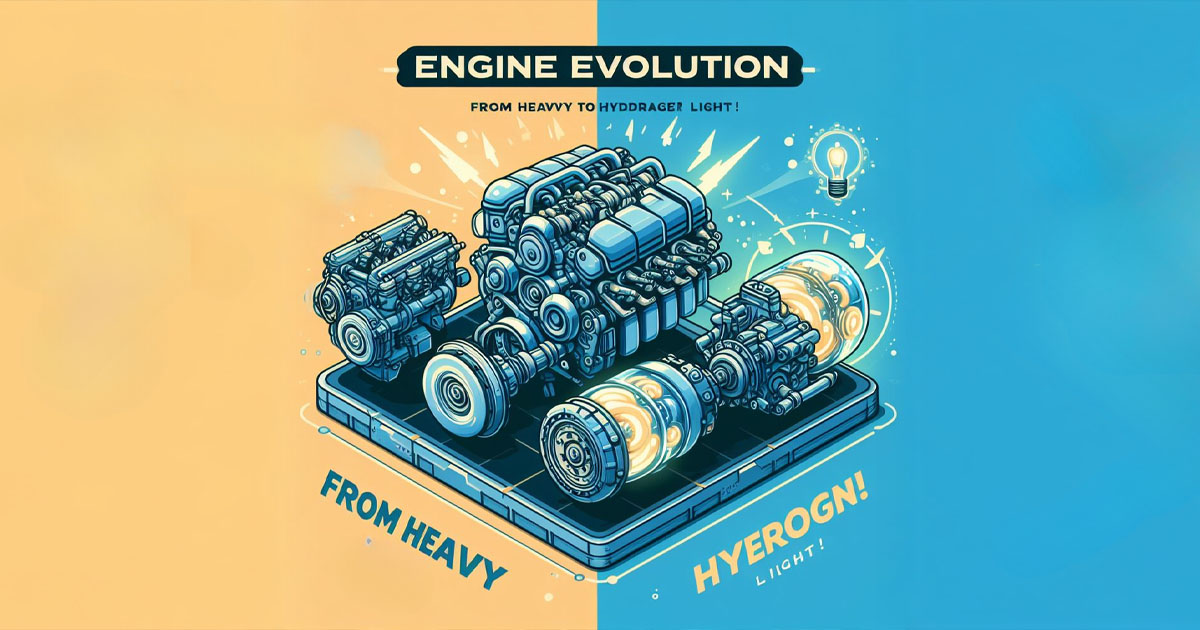
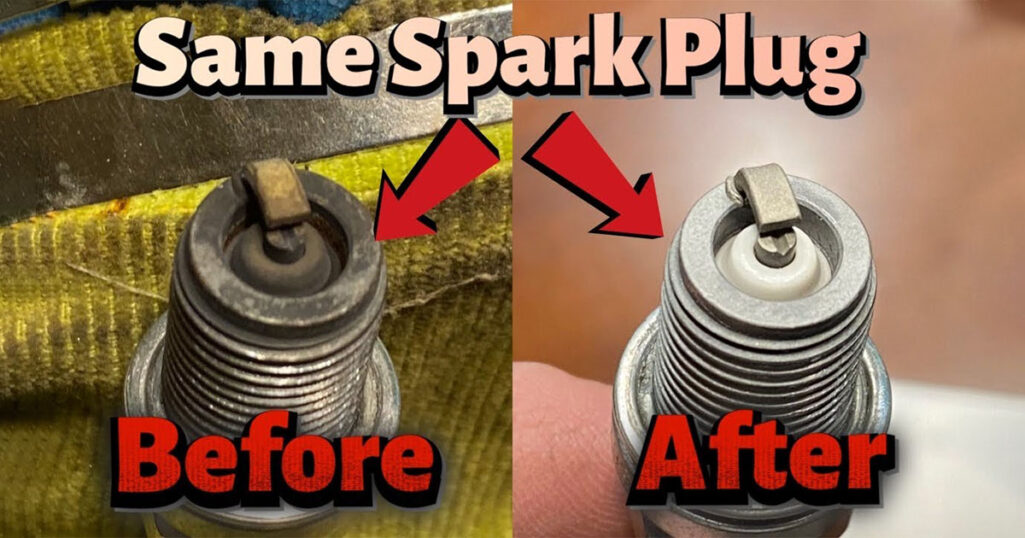
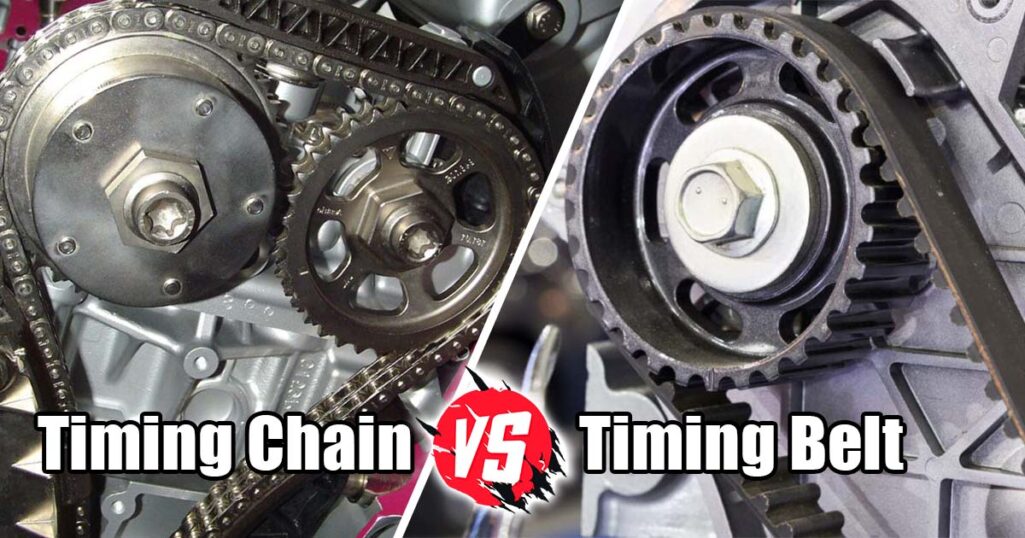
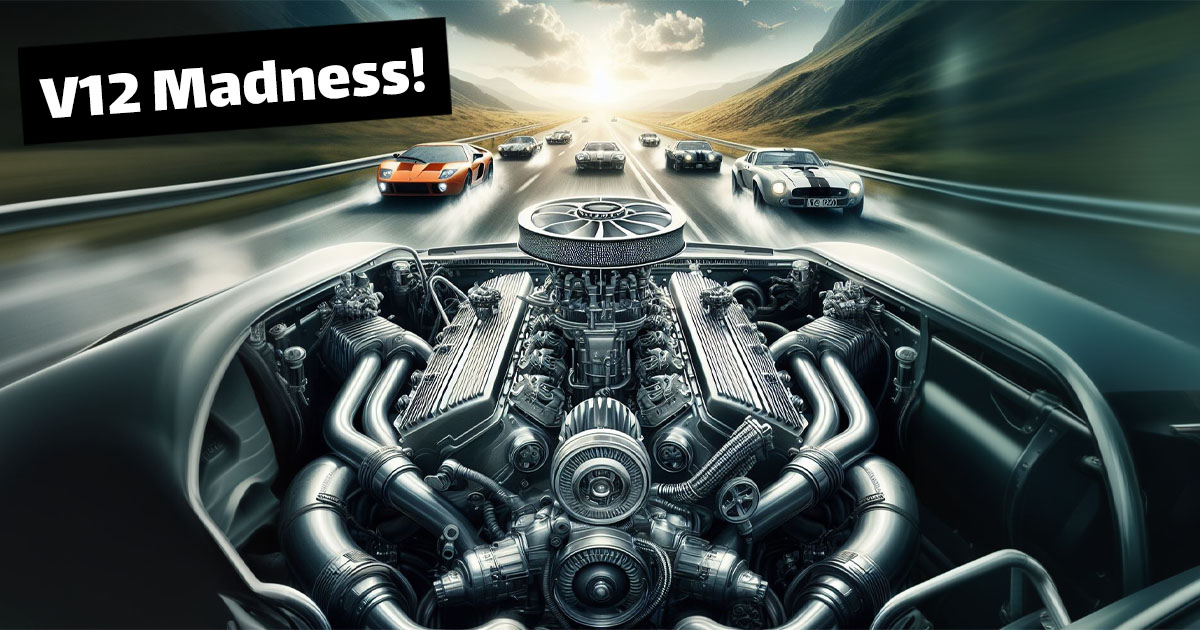
I am taking an automotive-tech course and the information used in the article is very helpful to finish my research on my report. Thank you
I’m really happy to hear this!